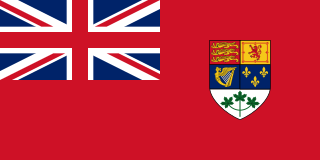
The 1936 Winter Olympics, officially known as the IV Olympic Winter Games, were a winter multi-sport event held from 6 to 16 February 1936 in the market town of Garmisch-Partenkirchen in Bavaria, Germany. The country also hosted the 1936 Summer Olympics, which were held in Berlin. It was the last year in which the Summer and Winter Games both took place in the same country.

The World Figure Skating Championships ("Worlds") is an annual figure skating competition sanctioned by the International Skating Union. Medals are awarded in the categories of men's singles, ladies' singles, pair skating, and ice dance. Generally held in March, the World Championships are considered the most prestigious of the ISU Figure Skating Championships. With the exception of the Olympic title, a world title is considered to be the highest competitive achievement in figure skating.
Figure skating at the 1924 Winter Olympics took place at the Stade Olympique in Chamonix, France, from 29 to 31 January 1924. Three figure skating events were contested: men's singles, ladies' singles, and pair skating.
1936 in sports describes the year's events in world sport.

Figure skating at the 1928 Winter Olympics took place at the Olympic Ice Rink in St. Moritz, Switzerland, between 14 and 19 February 1928. Three figure skating events were contested: men's singles, ladies' singles, and pair skating.
At the 1936 Winter Olympics, four speed skating events were contested. The competitions were held on Tuesday, 11 February 1936, Wednesday, 12 February 1936, Thursday, 13 February 1936, and on Friday, 14 February 1936.

Figure skating at the 1932 Winter Olympics took place at the Olympic Center Arena in Lake Placid, New York. Three figure skating events were contested: men's singles, ladies' singles, and pair skating. The competitions were held from Monday, 8 February to Friday, 12 February 1932. It was the first time the events were held indoors.
At the 1936 Winter Olympics at Garmisch-Partenkirchen, Germany, alpine skiing was arranged for the first time in the Olympics, a combined event for men and women.

Australia sent a delegation to compete at the 1936 Winter Olympics from 6 to 16 February 1936 in Garmisch-Partenkirchen, Germany. This was the nation's first appearance at an Winter Olympic Games since the competition began in 1924. Australia delegation consisted of one competitor. That was speed skater, Kenneth Kennedy who competed in three events in the Speed skating competitions. He finished in 29th overall in the 500 meters and 33rd overall in the 1500 meters and the 5000 meters.

Australia sent a delegation to compete at the 1952 Winter Olympics from the 14 to 25 February 1952 in Oslo, Norway. This was the nation's second appearance at the Winter Olympic Games with their last appearance being in 1936.

Maxi Herber was a German figure skater who competed in pair skating and single skating. She is the youngest figure skating Olympic champion when she won gold in pair skating together with Ernst Baier at the 1936 Winter Olympics.

Canada competed at the 1936 Winter Olympics in Garmisch-Partenkirchen, Germany. Canada has competed at every Winter Olympic Games.

Figure skating was first contested in the Olympic Games at the 1908 Summer Olympics. Since 1924, the sport has been a part of the Winter Olympic Games.
The 1936 Winter Olympics were held in Garmisch-Partenkirchen, Germany. The games began on 6 February 1936, and ended on 16 February 1936. There were three cross-country skiing events held, in which only men competed. There were 109 male competitors from 22 different nations. The youngest participant was 17-year-old Resat Erces from Turkey, while the oldest participant was Nils Backstrom from the United States of America at 34 years old. The athletes whom collected the most medals were Oddbjørn Hagen of Norway, and Erik Larsson of Sweden – each received two medals. Sweden collected more medals than any other country in the cross-country skiing events at a total of five.

Andrée Brunet was a French figure skater. Together with her husband Pierre Brunet she won Olympic medals in 1924, 1928 and 1932, as well as four world titles between 1926 and 1932 in pair skating. She also competed in singles, winning the national title in 1921–1930 and finishing fifth at the 1924 Winter Olympics.
The 10,000 metres speed skating event was part of the speed skating at the 1936 Winter Olympics programme. The competition was held on Friday, 14 February 1936. Thirty speed skaters from 14 nations competed.
For the 1936 Winter Olympics in Garmisch-Partenkirchen, Germany, a total of six sports venues were used. Alpine skiing events took place for the first time and were held in three different locations. Riessersee held the speed skating and some of the ice hockey matches while the bobsleigh events took place south of the lake. The ski jump and its neighboring stadium played host to the cross-country skiing, Nordic combined, and ski jumping events. Even though figure skating and some of the ice hockey matches took place outdoors at the ice stadium, the ice itself was artificially refrigerated to prevent ice thawing.
Carolyn Patricia Krau is a British former competitive figure skater. She competed in pair skating at the 1956 Winter Olympics and in ladies' singles at the 1960 Winter Olympics.










